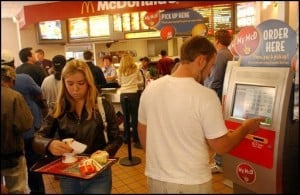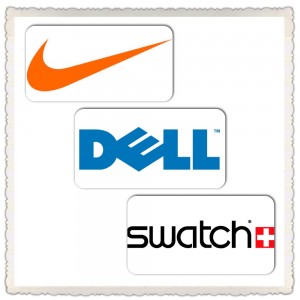Today’s world is primarily driven by the internet, including e-commerce. This does not come to the surprise of EBay CEO, John Donahoe. Technology has driven scale and automation and our shopping experiences have become less dependent on human interaction and more dependent on a steady WiFi connection. Donahoe says, “these changes in the commercial landscape tend to be ‘phrased in zero-sum terms: big retailers versus the little guy. Local versus global. ‘”
While EBay is a major contributor in this landscape, its biggest competition is Amazon. Amazon is known for driving retailers out of business, especially with its most recent proposition to deliver packages with drones. One thing that stands out about Amazon is the idea of “showrooming.” Amazon’s mobile application will allow you to scan a barcode of any item in a store and it will show comparable items with competitive pricing. You can essentially buy the item in a few clicks while still in the store.
EBay is initially thought of as an auction website. However, “since Donahoe took over in 2008, he has slowly moved the company beyond auctions, developing technology partnerships with big retailers like Home Depot, Macy’s, Toys ‘‘R’’ Us and Target and expanding eBay’s online marketplace to include reliable, returnable goods at fixed prices.” This is EBay’s process strategy that will revolutionize the e-commerce world, and to Donahoe’s hope, take on Amazon.
In our Management of Operations course, we have talked about the idea of a “process strategy.” The objective is to create a process to produce products that meets customer requirements within cost and other managerial constraints. EBay is taking on a “mass customization” approach to its process strategy. It is the rapid, low-cost production of goods and service to satisfy increasingly unique customer desires. EBay is creating a “process redesign.” It is the fundamental thinking of business processes to bring about dramatic improvements in performance. We learned that changing processes like this can be difficult and expensive. EBay did not acquire all of its retailers for cheap, they had to put in an investment in order to create profitability which is what is needed in a process redesign.
EBay wants to push the concept of a “digital wallet.” While other digital payment options exist, like Google Wallet and Apple Pay, EBay wants to expand it. In 2002, EBay bought PayPal as a way to safely transfer money between people who don’t know each other. EBay has also been experimenting with a concept it calls Connected Glass, an interactive glass that may one day create a “smart” mirror in a store that can take measurements and allow you to try on outfits virtually.
While Donahoe doesn’t know exactly where all of his technological efforts will lead him and EBay, he says, ‘‘I would say everything we’re doing is just enabling the future.’’
Do you think the PayPal Digital Wallet is going to take off? Or will it be forced to the side by Apple Pay and other digital wallets?
Read the article here




